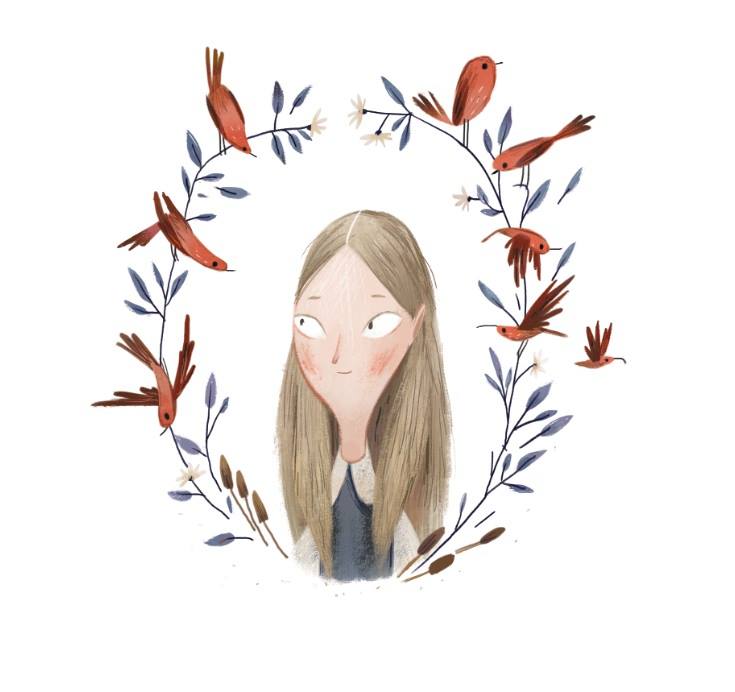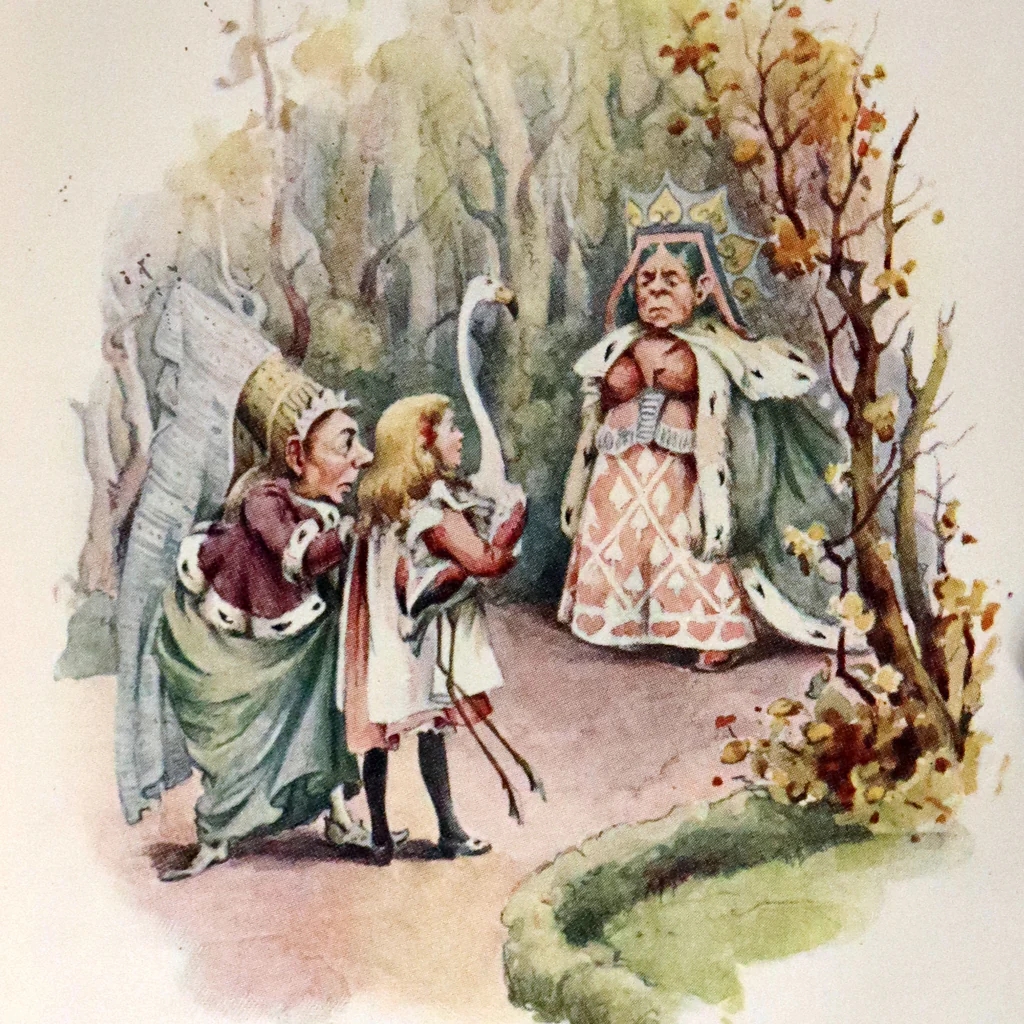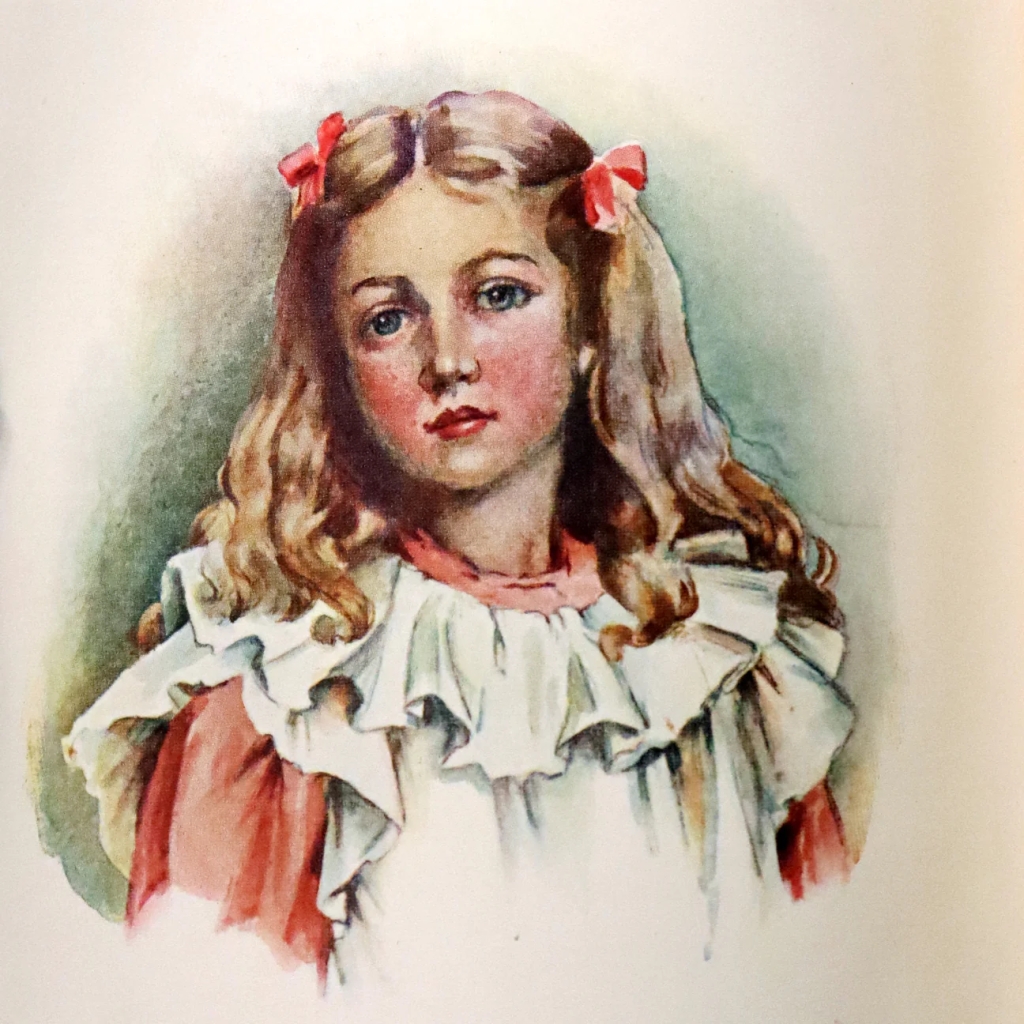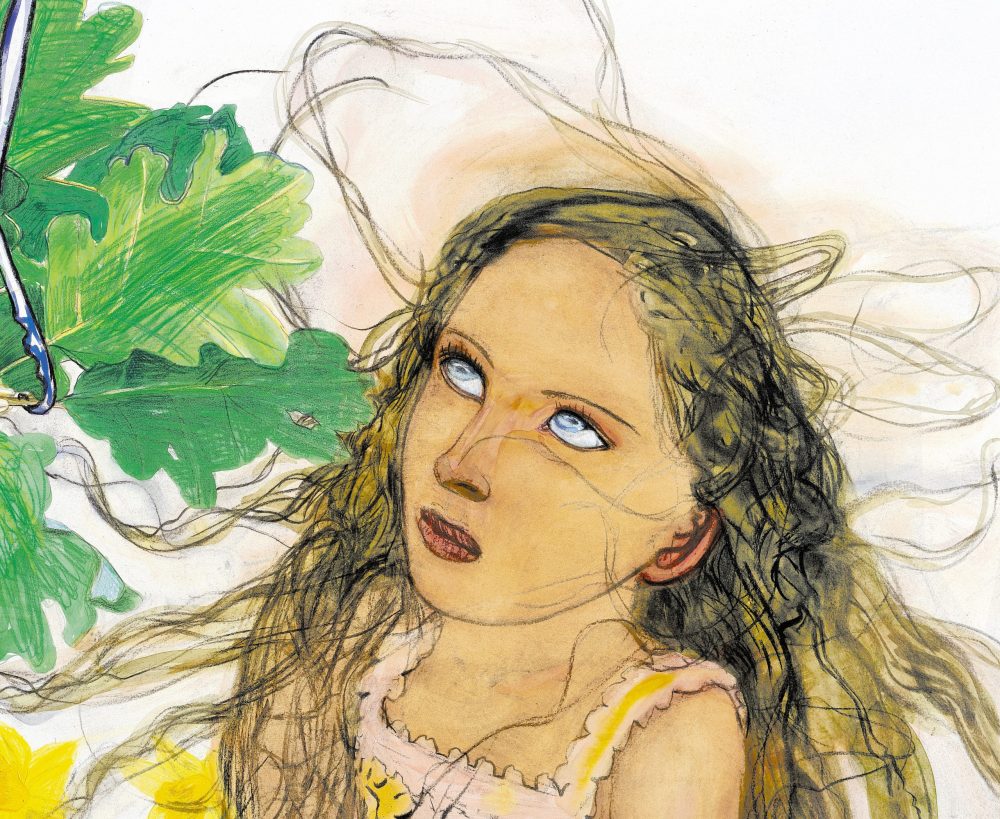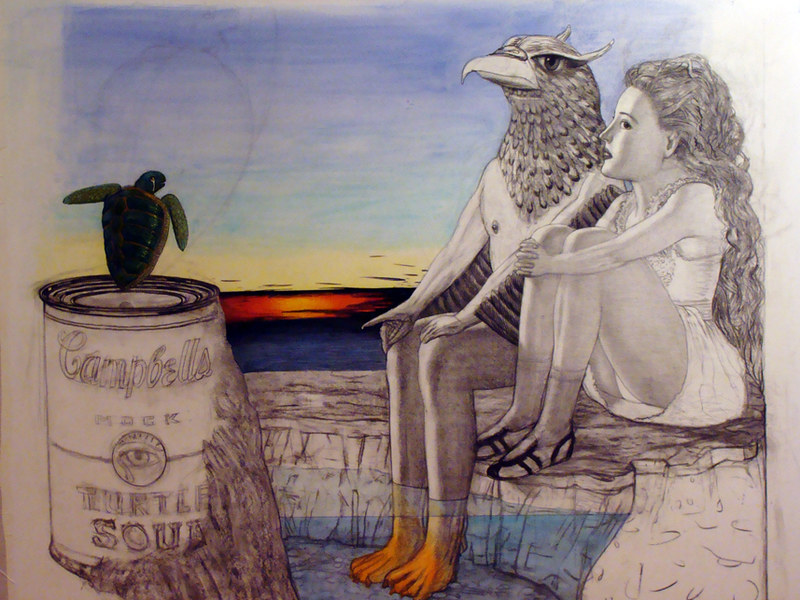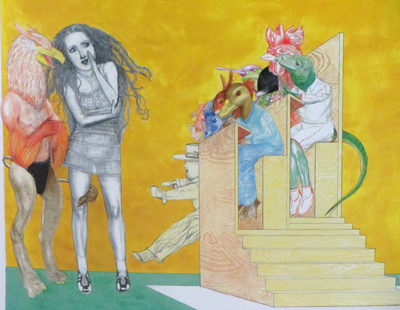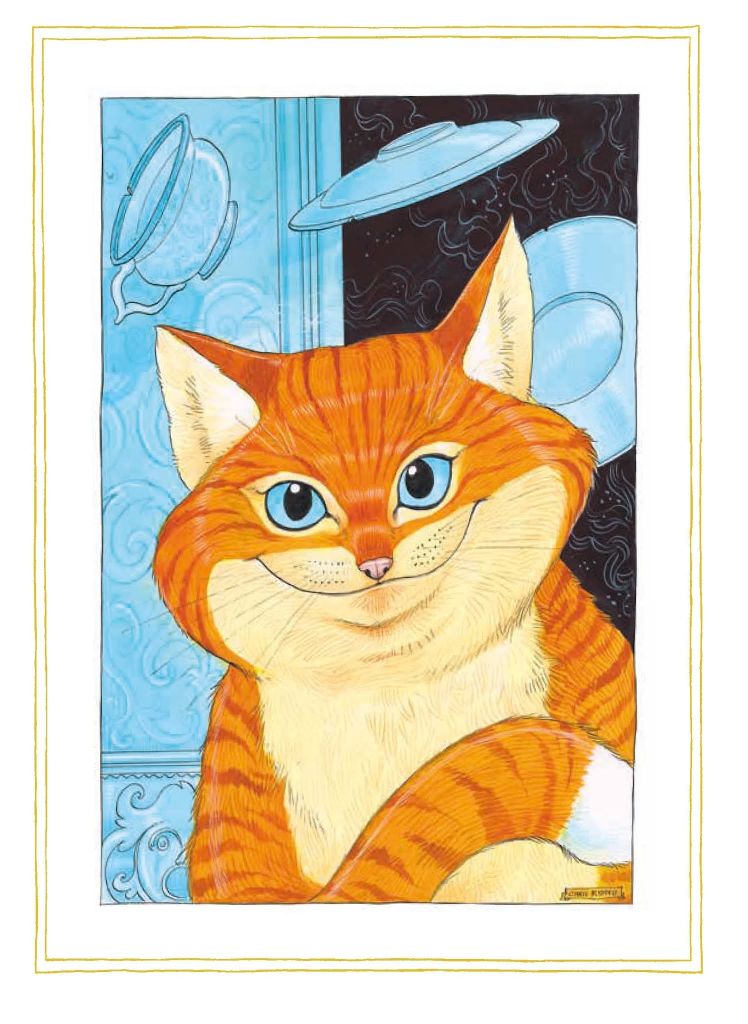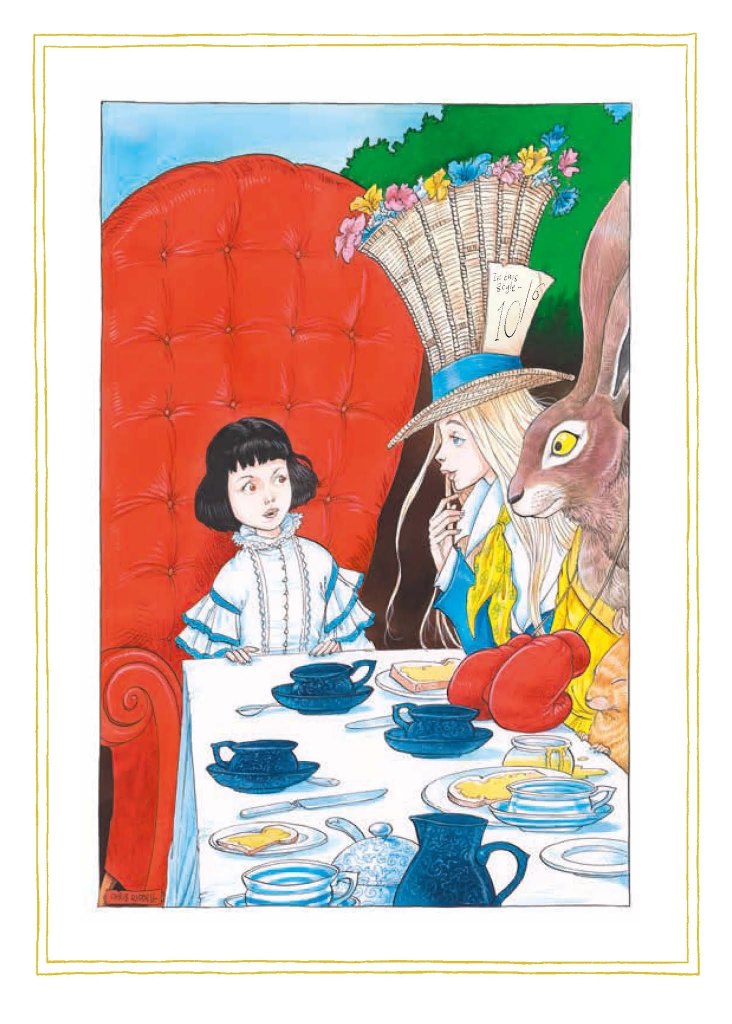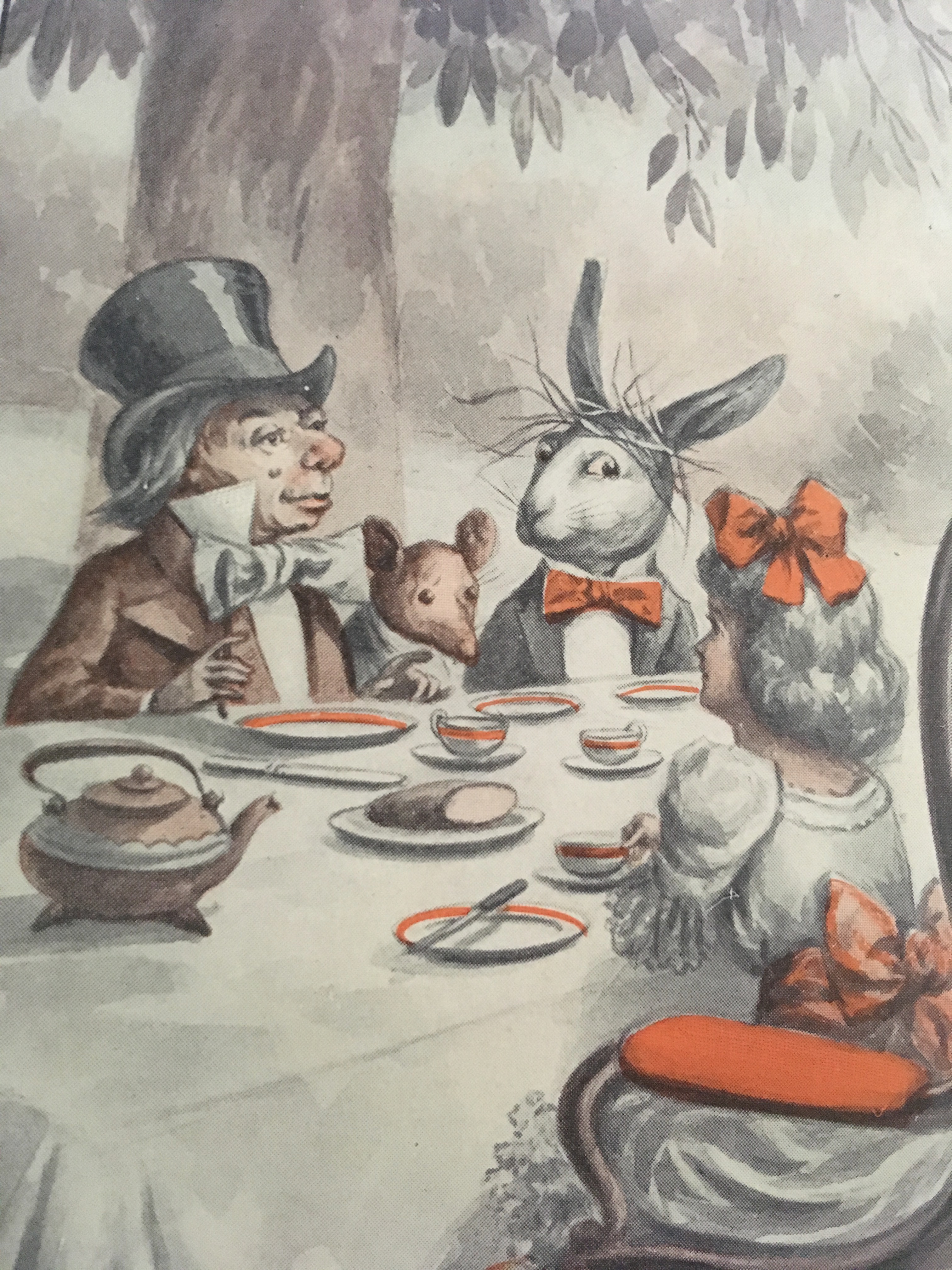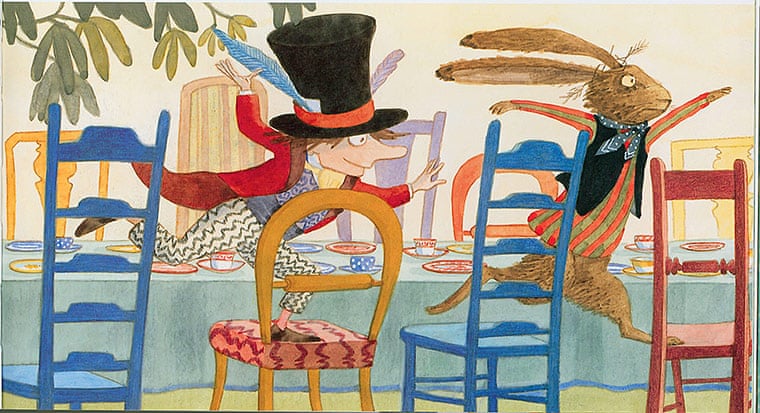Júlia Sardà Portabella is an illustrator from Barcelona. She completed her studies in illustration in 2010 at Joso, the University of Fine Arts and Massana School in Barcelona. Her work, focused in editorial illustration, is recognized for her captivating and whimsical illustrations. She can be appreciated in several great books like The Wonderful Wizard of Oz, Alice in Wonderland and Charlie and the Chocolate Factory, or her first illustrated book La reina en la cueva.
Sarda’s vibrant colors illustrations, intricate details and enchanting dreamlike quality, hold the necessary elements to depict the fantastical world of Lewis Carroll’s. One can find a published Alice from Julia Sarda (2015, edited by Two Hoots), but also a sketched one. Interestingly, the first is inspired by Alice Lidell, the later depicts a classic blond Alice.


